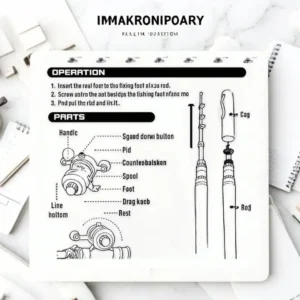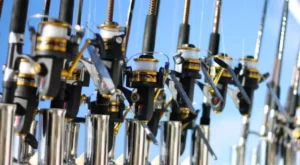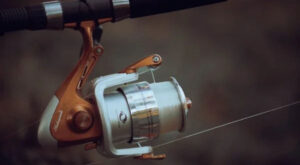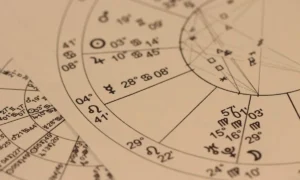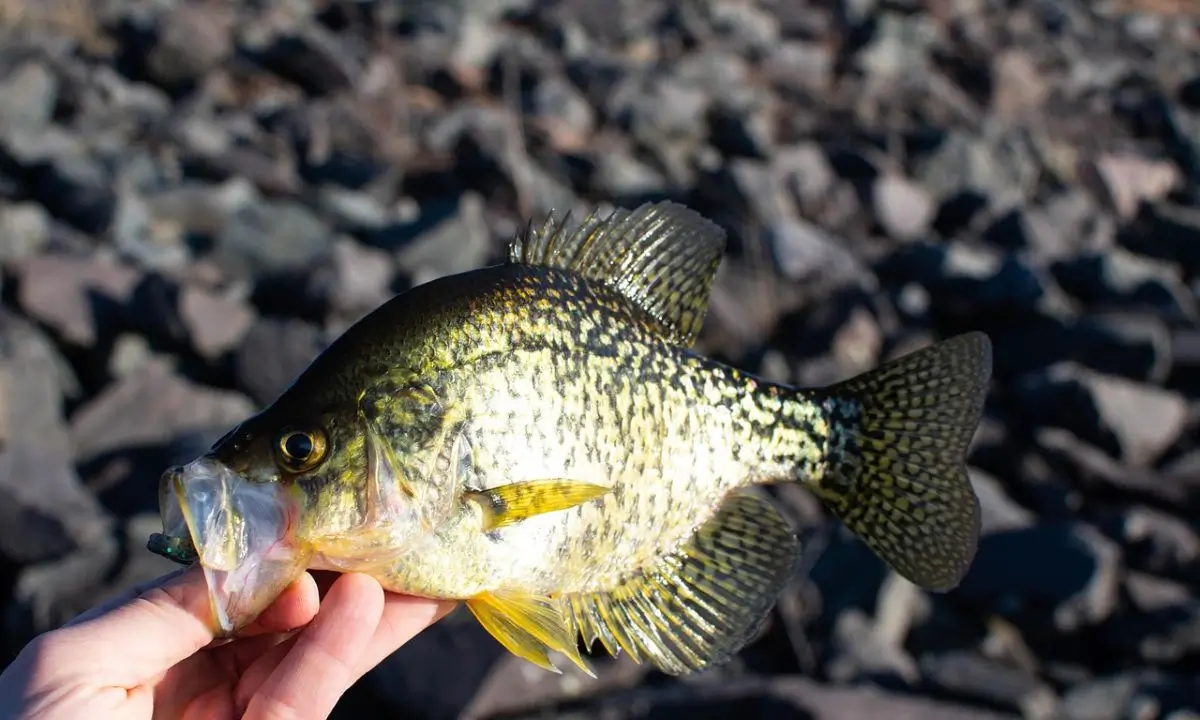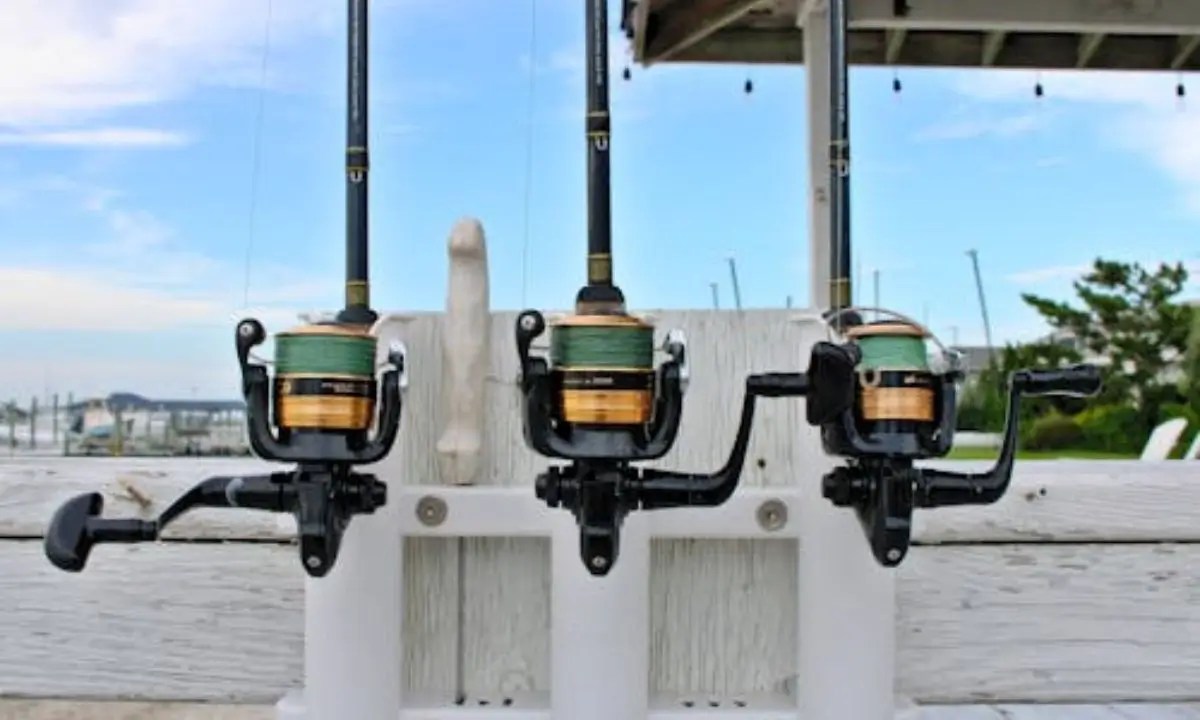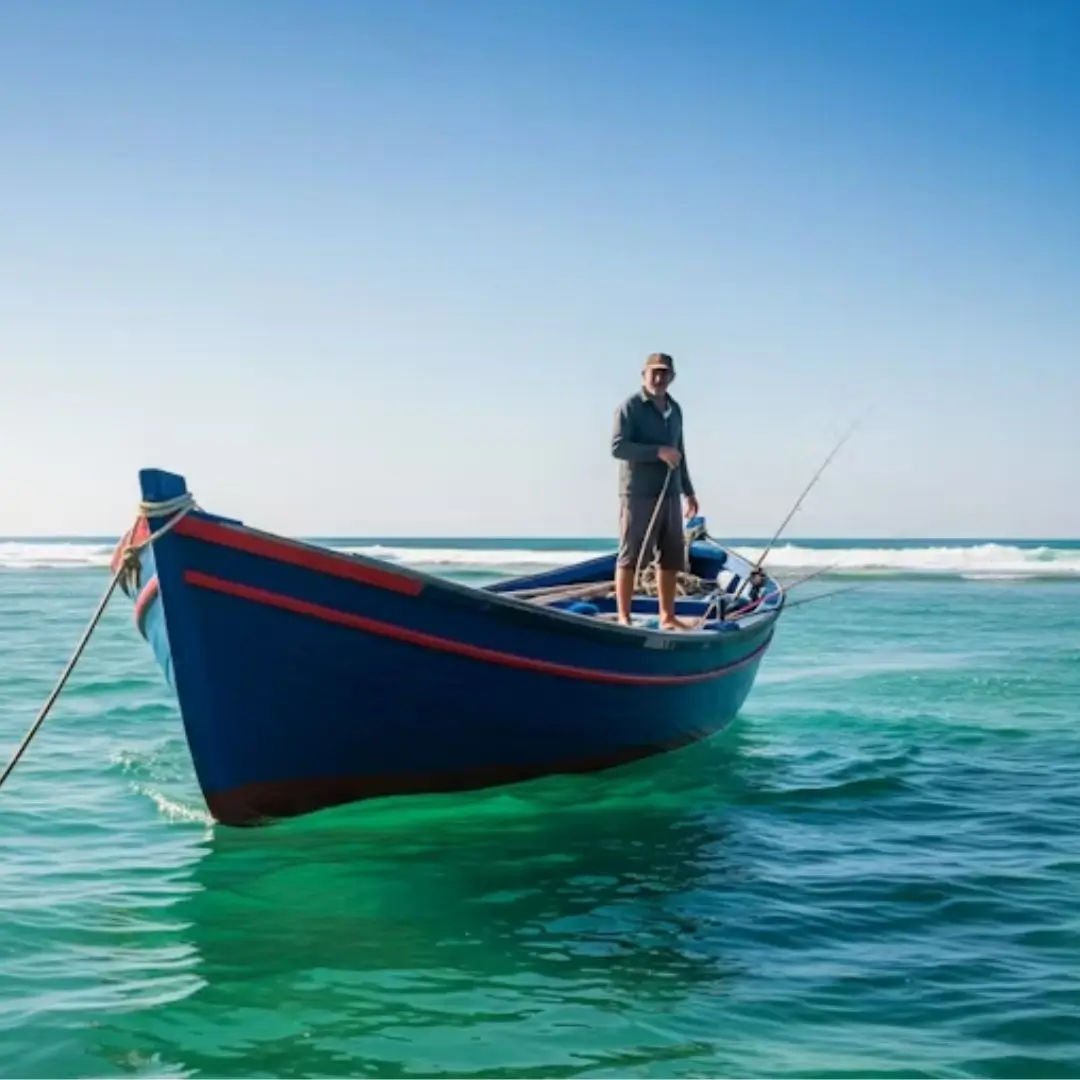A fishing reel gear ratio chart shows how fast the reel spool turns for each handle rotation. Knowing the right ratio helps anglers choose the best speed for lures, improving casting, retrieval, and catch success.
Introduction:
Fishing isn’t just about picking the right bait or finding the perfect spot — your reel plays a huge role too. A fishing reel gear ratio chart helps you understand how different gear ratios affect lure speed, casting distance, and overall performance.
Whether you’re a beginner learning the basics or a seasoned angler aiming for precision, knowing your reel’s gear ratio makes a big difference. With the right ratio, you can retrieve lures faster, control your bait better, and increase your chances of landing more fish.
In this guide, we’ll break down the fishing reel gear ratio chart, explain each ratio, and show real examples of when to use slow, moderate, or fast gears. By the end, you’ll know exactly which ratio fits your fishing style and technique. details Gear Ratio Fishing Reels
Hooked on Ratios? Let’s Decode Fishing Reel Gears!
When you’re out fishing, your reel’s gear ratio can make a big difference in your success. A gear ratio tells you how many times the spool spins for each full turn of the handle. For example, a 7.5:1 ratio means the spool rotates 7.5 times per handle turn, while a 5.3:1 ratio spins slower.
Understanding this helps you control lure speed and match it with your fishing technique. Fast ratios are great for topwater lures or spinnerbaits, while slower ratios work best for deep-diving crankbaits that need more time in the strike zone.
Think of it like riding a bike: higher gears make you move faster but require more effort, and lower gears give better control for climbing. To make it easier, check out this helpful diagram showing handle turns vs spool rotation: [Insert small diagram/image here].
💡 Pro Tip: Learn more about different reels and their uses here: [Types of Fishing Reels and How They Work].
Why Choose the Fishing Reel Gear Ratio Chart?
A gear ratio chart isn’t just a technical table — it’s a smart angler’s roadmap. It gives you:
Precision: Choose the right reel for different styles (topwater, deep crank, finesse, etc.)
Efficiency: Minimize effort and maximize results
Speed Matching: Know when to go fast, when to go slow
Better Performance: A wrong gear ratio can cost you a fish — the right one can land a trophy!
Think of it like choosing the right gear on a bike — you need the right ratio to ride smoothly on different terrains. In fishing, the terrain is your technique.
Benefits and Importance of Knowing Gear Ratios
Knowing your fishing reel gear ratio Explained can make your fishing trips much more successful and enjoyable. Here are the main benefits:
- Technique Optimization: Different baits need different speeds. For example, crankbaits work best with slow ratios, while topwater lures need fast ratios. Matching the gear ratio with your bait improves strike chances.
- Energy Saving: Using the right ratio reduces effort when reeling in heavy fish. A fast reel can cover more water quickly without tiring your arms.
- Accurate Targeting: Proper gear ratios let you control lure speed and presentation. This helps attract fish more effectively and increases your catch rate.
- Time Efficiency: Faster ratios mean quicker retrieves, letting you cast more often and maximize your fishing time.
- Confidence Boost: Understanding gear ratios gives you more control over your fishing technique. You’ll feel confident picking the right reel for any situation.
💡 Real-Life Example: I often use a 6.4:1 ratio for general fishing with soft plastics — it’s versatile and reliable. When I fish with spinnerbaits or jerkbaits, I switch to 7.1:1 for faster reaction and quicker lure action.
✅ Tips for Beginners:
- Keep a small chart of your reels’ gear ratios handy.
- Match the lure type with the recommended ratio.
Experiment during practice trips to find your comfort zone.
Real-Life Examples: Fast vs Slow Gear Ratios
Understanding how gear ratios affect your fishing performance can make a huge difference. Let’s look at two real-life examples:
- Reel A – 7.5:1 Gear Ratio: Each handle rotation spins the spool 7.5 times. This is perfect for fast-moving lures like topwater plugs, jerkbaits, and buzzbaits. Using a fast ratio helps cover more water quickly and react immediately when a fish strikes.
- Reel B – 5.3:1 Gear Ratio: Each handle turn spins the spool 5.3 times. This slower ratio is ideal for crankbaits or deep-diving lures that need a steady, slower retrieve. It keeps your bait in the strike zone longer, increasing your chances of a bite.
💡 Pro Tip: For versatile fishing, I personally use a 6.4:1 gear ratio. It works well with soft plastics, spinnerbaits, and most general setups. Switching to 7.1:1 is helpful for faster presentations or reaction baits when fishing for aggressive species. details What Size Hooks Trout Fishing
✅ Quick Tip for Beginners:
- Use slower ratios for deep or heavy lures.
- Use faster ratios for surface or quick-action baits.
- Keep a note of which gear ratios work best with your favorite lures.
Common Gear Ratios Explained
Fishing reels come in different gear ratios, and knowing which one to use can improve your fishing results. Here’s a simple guide:
- 5.1:1 to 5.4:1 – Slow Retrieve: Perfect for deep crankbaits, swimbaits, and cold-water fishing. Slower speeds let your bait stay in the strike zone longer, giving fish more time to bite.
- 6.1:1 to 6.4:1 – Moderate Retrieve: This is a versatile choice for most fishing styles. It works well with soft plastics, spinnerbaits, and general use, giving a balanced speed for steady presentations.
- 7.1:1 to 8.1:1 – Fast Retrieve: Ideal for flipping, pitching, topwater, and reaction baits. Fast ratios let you quickly pull lures, making it easier to trigger strikes from aggressive fish.
💡 Pro Tip: Remember, the gear ratio tells you how many spool rotations happen per handle turn. A higher ratio = faster retrieve; a lower ratio = slower, more controlled retrieve.
Fishing Reel Gear Ratio Chart (2025)
Understanding the right gear ratio is easier with a clear chart. Here’s a simple guide to the most common fishing reel gear ratios in 2025 and what they’re best for:
| Gear Ratio | Retrieval Speed | Best For |
| 5.1:1 | Slow | Crankbaits, swimbaits, deep diving lures |
| 6.4:1 | Moderate | Soft plastics, spinnerbaits, general use |
| 7.5:1 | Fast | Topwater lures, jerkbaits, buzzbaits |
| 8.1:1 | Extra Fast | Flipping, pitching, reaction baits |
💡 Quick Tip: A gear ratio tells you how many times the spool spins per handle turn. Higher ratios = faster retrieves, lower ratios = slower, controlled retrieves.
Using this chart can save time and improve your catch rate. For example, a 5.1:1 reel keeps crankbaits in the strike zone longer, while a 7.5:1 reel is perfect for fast topwater action. Keeping this chart handy — on your phone or printed — makes it easy to choose the right reel for your fishing style and bait.
✅ Pro Tip: Always match the gear ratio to your bait type and fishing technique. Using the wrong speed can reduce your chances of catching fish. more details Fishing Reel Gear Ratios Guide
Real-Life Example: Fast vs Slow Gear Ratios
To really understand fishing reel gear ratios, let’s look at a simple real-life example. Imagine you’re using two different reels on the same fishing trip.
Reel A (7.5:1 Gear Ratio): Every turn of the handle spins the spool 7.5 times. This high-speed reel is perfect for fast presentations, like topwater lures or buzzbaits. When fish are aggressive, you can retrieve lures quickly, cover more water, and react faster to strikes. It’s ideal for techniques that need quick action and a fast response.
Reel B (5.3:1 Gear Ratio): Here, each handle turn spins the spool 5.3 times. Slower retrieval means your bait stays longer in the strike zone — perfect for crankbaits or swimbaits. This slower gear ratio is great for fishing in colder water or when fish are more cautious. It gives you precise control and reduces the chance of spooking fish.
🎯 Personal Tip: I often use a 6.4:1 gear ratio for soft plastics and general fishing — it’s a versatile all-rounder. For faster lures like jerkbaits or spinnerbaits, I switch to 7.1:1 to increase reaction time when fish strike.
By understanding the difference between fast and slow reels, you can pick the right gear ratio for your technique, water conditions, and target fish. Matching your reel speed to your bait ensures better presentations and higher chances of landing trophy catches.
✅ Quick Advice: Keep track of your favorite gear ratios for different lures — it makes planning a fishing trip much easier and more successful.
Helpful Consultation Section:
Still unsure which reel to pick? I’ve helped many fellow anglers choose the right setup based on their fishing style, location, and target species.
🎣 Drop your question in the comments or use my contact form — I’ll get back to you with a personalized recommendation based on years of real fishing experience.
Conclusion Fishing Reel Gear Ratio Chart
Choosing the right fishing reel gear ratio doesn’t have to be confusing. With the chart and examples we shared, you can now match your reel to your fishing style, lure type, and technique with confidence. Whether you prefer slow retrieves for crankbaits or fast action for topwater lures, understanding gear ratios helps you fish smarter, save energy, and catch more fish.
Remember, a versatile ratio like 6.4:1 works well for most techniques, but having reels with specialized ratios can improve your performance for specific methods like flipping, pitching, or deep diving. Keep this fishing reel gear ratio chart handy — whether on your phone or printed — it’s a quick reference to make the best choice at the tackle shop.
🎣 Need personalized advice?
If you’re unsure which reel or ratio suits your fishing style, location, or target species, I’m here to help. Over the years, I’ve helped countless anglers pick the right setup for better results. Drop your questions in the comments or reach out through my contact form, and I’ll provide recommendations based on real experience.
By applying the knowledge from this guide, you’ll fish smarter, reduce frustration, and enjoy more successful trips. Understanding your gear is as important as knowing where to fish — and with the right gear ratio, every cast counts.
✅ Next step: Save this chart, try different gear ratios, and observe which works best for your favorite techniques. The more you practice, the easier it gets to choose the perfect reel for every fishing adventure.
🎣 Have you tried using different gear ratios to improve your lure speed or retrieval? Share your experiences and favorite setups in the comments below!
✍️ Written by Jihad – Professional Fisherman
Website: profishingbyjihad.com
What is a fishing reel gear ratio?
A fishing reel gear ratio shows how many times the spool rotates per handle turn. It affects lure speed, retrieve power, and overall fishing efficiency.
How do I choose the best gear ratio for my fishing style?
Match your gear ratio to the lure and technique: slow ratios for crankbaits, moderate for soft plastics, and fast for topwater or reaction baits.
Does gear ratio affect line retrieval speed?
Yes, higher gear ratios retrieve line faster, ideal for covering water quickly or using fast-moving lures, while lower ratios give better control for slow presentations.
Can I use one gear ratio for all fishing?
A versatile ratio like 6.4:1 works for most techniques, but having multiple reels with different ratios ensures efficiency for specialized methods.
What gear ratio is best for deep crankbaits?
Use a slow ratio (5.1:1 to 5.4:1) for deep crankbaits. It keeps the bait in the strike zone longer and improves hook-up chances.
How does gear ratio impact energy and effort?
Lower ratios require more turns for line retrieval, saving strength on heavy fish, while higher ratios retrieve quickly but demand more control and reaction speed.
Should freshwater and saltwater fishing use different gear ratios?
Yes, saltwater often needs lower ratios for strong species, while freshwater techniques like topwater or jerkbaits benefit from faster ratios for quick lure action.



